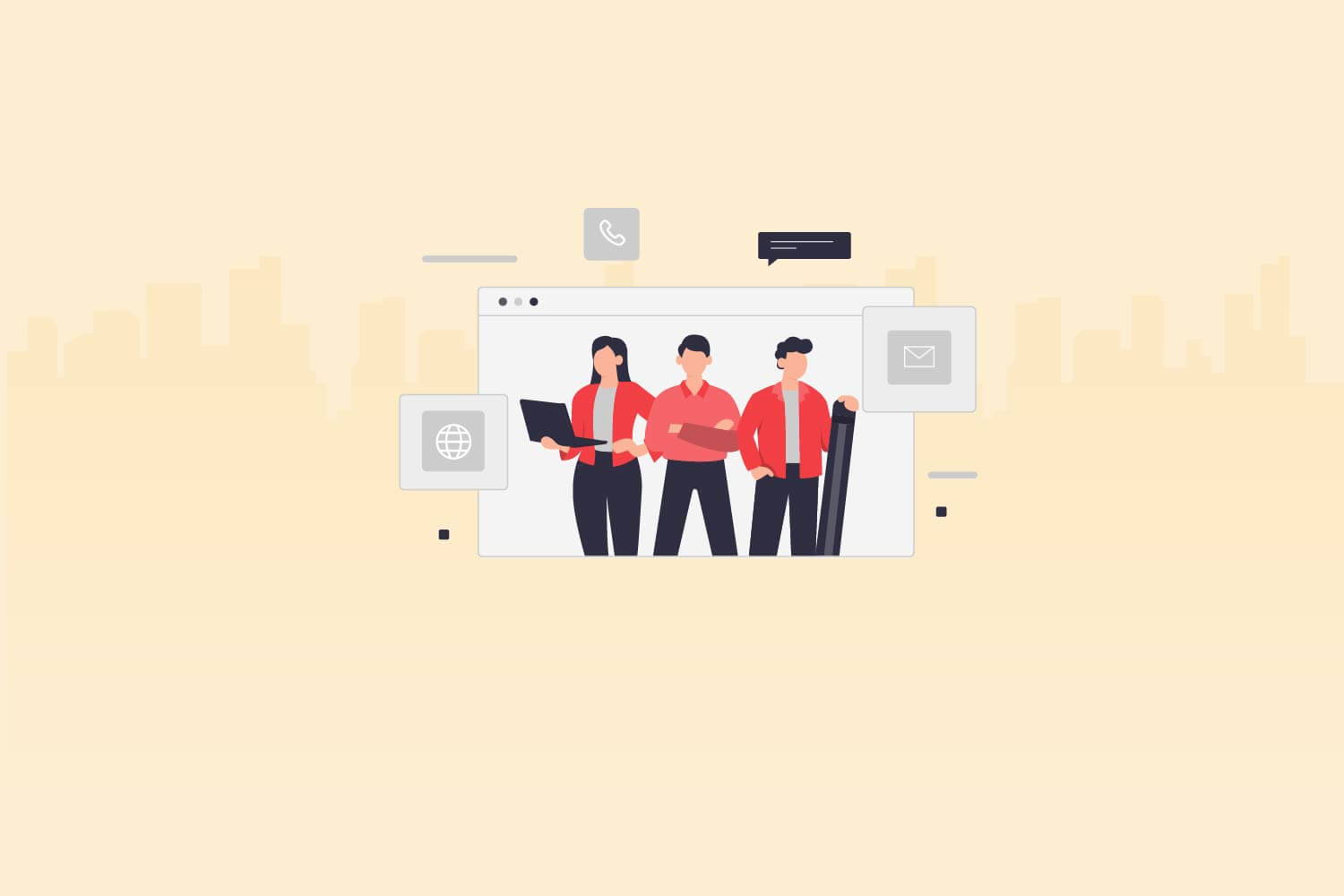The traditional approach to new hire orientations is undergoing a profound transformation to align with the demands of the modern workforce. In this era of remote work, flexible arrangements, and diverse teams, a cookie-cutter onboarding experience no longer suffices.
According to careerbuilder & silkroad 2019, 93% Of Businesses Agree That Onboarding Can Help New Hires Decide Whether They Want to Stay or Leave.
Companies are reimagining their approach to “new hire orientation” by harnessing technology, embracing flexibility, and prioritizing personalization. This blog delves into the changing dynamics of new hire orientations and offers insights into crafting a future-ready onboarding process that sets the stage for long-term success.
The evolution of new hire orientations
In an era marked by rapid technological advancements and shifting workplace dynamics, the traditional concept of “new hire orientation” has undergone a profound transformation. Organizations are increasingly recognizing the need to adapt their onboarding processes to align with the demands of the modern workforce. The evolution of new hire orientations is no longer just about acclimating employees to company policies; it’s about creating an immersive and engaging experience that lays the foundation for long-term productivity and success.
The modern “new hire” expects more than just a mundane orientation that focuses solely on paperwork and procedural information. They desire an experience that reflects the company’s values, culture, and aspirations. This evolution stems from the understanding that engaged employees are more likely to be productive and contribute positively to the organization’s growth. As a result, new hire orientations now incorporate a blend of technology, personalization, and strategic planning.
Technology plays a pivotal role in this evolution. Virtual reality tours, interactive onboarding platforms, and multimedia presentations offer a dynamic way to introduce new hires to the company’s mission, vision, and work environment. This technological integration not only captures the attention of new hires but also provides them with a glimpse into the innovative approach the company takes towards its operations.
Personalization is another cornerstone of the evolving new hire orientation process. Recognizing that every employee is unique, organizations are moving away from generic approaches and tailoring their onboarding experiences to individual needs. This might involve assigning mentors, creating customized training paths, or allowing new hires to select areas of interest for deeper exploration.
In conclusion, the evolution of new hire orientations reflects the broader changes in the way we work. It’s no longer a one-size-fits-all approach but a strategic investment in the future of the organization. By embracing technology, fostering personalization, and elevating the overall experience, companies are not only enhancing engagement and productivity but also paving the way for a workforce that is equipped to thrive in the ever-evolving landscape of work.
Key components of a successful new hire orientation
In today’s dynamic and ever-changing work landscape, the process of welcoming and integrating new hires into an organization has evolved significantly. A successful “new hire orientation” is no longer merely about administrative tasks and paperwork; it’s a strategic process designed to foster a positive and productive onboarding experience. This paragraph will discuss the key components that contribute to the success of a modern new hire orientation.
First and foremost, clear communication is crucial. New hires should receive comprehensive information about their roles, responsibilities, and expectations right from the beginning. This helps them understand their place within the organization and how their contributions fit into the larger picture. Additionally, a well-structured orientation should encompass an introduction to the company’s values, culture, and mission. When new hires align with the company’s core principles, they are more likely to become engaged and committed team members.
Another essential aspect is the provision of resources. From training materials to technological tools, equipping new hires with the resources they need to excel in their roles is essential. This might involve providing access to online training platforms, mentorship programs, or collaboration tools that facilitate seamless integration into the team.
Furthermore, fostering connections is vital. Encouraging interaction between new hires and their colleagues helps build a sense of belonging and accelerates the process of adapting to the company culture. Activities like team-building exercises, introductions to key team members, and networking events contribute significantly to this aspect of orientation.
In conclusion, adapting to the changing nature of work requires a thoughtful and comprehensive approach to new hire orientation. By focusing on clear communication, resource provision, and fostering connections, organizations can ensure that their new hires not only integrate smoothly but also become active contributors to the company’s success. This evolution from a basic administrative process to a holistic and strategic onboarding experience reflects the commitment of organizations to set their new hires on the path to long-term growth and engagement.
Conducting impactful new hire orientations remotely
In the wake of technological advancements and changing work dynamics, the concept of new hire orientations has extended beyond the traditional in-person setting. Conducting a meaningful “new hire orientation” remotely has become a necessity for organizations that embrace flexible work arrangements and a global workforce. This paragraph explores the strategies and considerations involved in navigating the virtual landscape for new hire orientations.
Remote orientations require a shift in approach. Rather than relying on physical interactions, companies are harnessing digital tools and platforms to create engaging and interactive experiences. Virtual onboarding portals, video conferencing, and webinars play a pivotal role in introducing new hires to the company culture, policies, and procedures. These tools bridge the geographical gap and ensure that remote new hires feel connected from day one.
Maintaining engagement in a virtual setting is a primary challenge. To overcome this, organizations are incorporating multimedia elements into their orientations. Engaging videos, interactive quizzes, and virtual tours provide an immersive experience that captures new hires’ attention and aids in information retention.
Furthermore, personalization remains key even in a virtual environment. Tailoring the onboarding experience to each individual’s role, responsibilities, and learning preferences enhances the sense of value and belonging. Regular check-ins and virtual meetings with mentors or supervisors help new hires feel supported and provide a platform for asking questions and seeking guidance.
In conclusion, the shift to remote work has prompted organizations to rethink their approach to new hire orientations. By leveraging technology, creating engaging content, and prioritizing personalization, companies can successfully navigate the virtual landscape and ensure that remote new hires are integrated smoothly and effectively. This evolution in onboarding practices reflects the adaptability of modern businesses and their commitment to providing a comprehensive and inclusive orientation experience, regardless of physical location.
Building a comprehensive new hire orientation program
The evolution of “new hire orientations” goes beyond the mere dissemination of policies and procedural information. Organizations now recognize that effective onboarding is a strategic opportunity to instill company culture, values, and long-term vision in new team members. This paragraph delves into the concept of building a comprehensive new hire orientation program that transcends the basics.
A comprehensive orientation program starts by integrating company culture into every aspect of the onboarding process. It’s not just about what the company does, but why it does it. Presenting the organization’s history, mission, and core values not only educates new hires but also aligns their motivations with the company’s overarching goals.
Additionally, a focus on professional development enhances the program’s comprehensiveness. Beyond initial training, organizations are offering continuous learning opportunities that empower new hires to hone their skills and grow within the company. This might involve access to online courses, workshops, or mentoring programs that contribute to their long-term success.
Moreover, incorporating feedback mechanisms into the orientation process is crucial. Gathering input from new hires about their onboarding experience enables organizations to identify areas for improvement and make adjustments in real-time. This iterative approach ensures that the orientation program remains relevant and effective.
In conclusion, a comprehensive new hire orientation program encompasses elements that extend far beyond the basics. By infusing company culture, emphasizing professional growth, and seeking continuous feedback, organizations create an onboarding experience that not only imparts information but also inspires new hires to become invested members of the team. This holistic approach reflects the strategic nature of modern onboarding and underlines its role in shaping the success of both individuals and the organization as a whole.
Tailoring new hire orientations for diverse needs
In an increasingly diverse and inclusive work environment, recognizing the uniqueness of each “new hire” is paramount. Organizations are acknowledging that a one-size-fits-all approach to onboarding falls short of meeting the individual needs and preferences of their new team members. This paragraph delves into the significance of personalization in new hire orientations and how tailoring the experience can lead to more engaged and satisfied employees.
Personalizing new hire orientations involves taking into account factors such as the employee’s background, skill set, and learning style. This might mean customizing training modules based on prior experience, or assigning mentors who can provide guidance tailored to the individual’s career goals.
Furthermore, catering to different learning styles enhances the effectiveness of the orientation process. Some individuals may prefer hands-on training, while others might excel with visual or auditory methods. By offering a variety of learning resources, organizations accommodate diverse preferences and ensure that the information is absorbed more effectively.
Additionally, acknowledging cultural differences fosters inclusivity. Recognizing and respecting various cultural backgrounds not only makes new hires feel valued but also promotes a sense of belonging within the organization. This might involve introducing them to cultural employee resource groups or facilitating cross-cultural interactions.
In conclusion, personalization lies at the heart of creating a meaningful new hire orientation experience. By tailoring the process to individual needs, learning styles, and cultural backgrounds, organizations demonstrate their commitment to inclusivity and employee well-being. This approach not only facilitates smoother integration but also sets the stage for a more engaged and motivated workforce, contributing to the overall success of the organization.
The role of feedback and data in new hire orientations
In the realm of modern human resources, the significance of data-driven decision-making has extended to the onboarding process. The “new hire orientation” experience is no exception. Organizations are recognizing the value of collecting feedback and utilizing data to assess the effectiveness of their orientation programs. This paragraph delves into the role that feedback and data play in measuring the success of new hire orientations.
Feedback is a valuable tool that provides insights into the strengths and areas for improvement of an orientation program. Regular surveys or check-ins with new hires allow organizations to gather firsthand accounts of their experiences, identify pain points, and understand the aspects that resonate positively. This feedback loop empowers organizations to make real-time adjustments to enhance the onboarding process.
Data-driven insights offer a quantitative perspective on the orientation program’s impact. By tracking metrics such as time-to-productivity, retention rates, and employee engagement levels, organizations can assess the long-term effects of their onboarding efforts. This data helps identify patterns and correlations, enabling HR teams to refine their strategies for maximum effectiveness.
Moreover, data can guide personalization efforts. Analyzing individual preferences and learning styles can inform the creation of tailored learning paths, ensuring that each new hire is equipped with the resources they need to succeed. Data-driven personalization enhances the relevance and engagement of the orientation experience.
In conclusion, the integration of feedback and data into the new hire orientation process marks a shift towards evidence-based practices. By leveraging feedback to fine-tune the experience and utilizing data to measure outcomes, organizations can ensure that their onboarding efforts yield meaningful results. This commitment to continuous improvement not only enhances the efficiency of the orientation process but also contributes to the overall growth and success of the company and its employees.
Facilitating peer interaction in new hire orientations
The integration of new hires into an organization’s culture goes beyond understanding policies and procedures; it’s about connecting with colleagues and forging relationships that contribute to a sense of belonging. Recognizing this, modern “new hire orientation” programs are placing increased emphasis on facilitating peer interactions. This paragraph explores the significance of fostering connections among new hires and their colleagues as a vital aspect of the onboarding process.
Peer interactions provide new hires with a support network from day one. Being able to connect with colleagues who have similar roles or experiences can alleviate the stress of transitioning into a new environment. Informal interactions with peers can provide insights, tips, and practical knowledge that may not be covered in formal orientation sessions.
Team-building activities are increasingly incorporated into orientation programs to promote collaboration and camaraderie. These activities range from ice-breakers to group projects that encourage new hires to work together, fostering a sense of teamwork and unity.
Mentorship programs also play a role in fostering connections. Pairing new hires with experienced employees allows for one-on-one guidance, enabling new team members to have a dedicated resource for questions, concerns, and advice. This mentorship relationship can help new hires integrate more smoothly and become productive members of the team faster.
In conclusion, the value of fostering connections among new hires during their orientation cannot be understated. Peer interactions, team-building activities, and mentorship programs contribute to the development of a supportive network and a positive work environment. By focusing on these aspects, organizations can ensure that their new hires not only adapt to their roles but also feel welcomed and empowered as they embark on their journey within the company.
Integrating new hires into the company fabric
The process of “new hire orientation” extends beyond the initial onboarding period. Forward-thinking organizations recognize that successful integration involves long-term engagement and growth. This paragraph explores the importance of sustainability in the orientation process and how it contributes to the overall development of new hires within the company.
Sustainability in new hire orientations involves creating a seamless transition from the introductory phase to the ongoing development of skills and knowledge. Instead of viewing orientation as a one-time event, companies are adopting a continuous approach that ensures new hires have access to learning resources and support beyond their initial weeks. This sustains their growth and maintains their enthusiasm for their roles.
One strategy for achieving sustainability is the creation of learning pathways. These pathways outline a progression of training, skill development, and career advancement opportunities that new hires can follow. This structured approach provides a clear roadmap for growth and aligns individual development with company goals.
Additionally, mentorship programs play a role in fostering long-term growth. Pairing new hires with mentors who provide guidance and support throughout their journey helps them navigate challenges and seize opportunities. This sustained interaction contributes to the development of a well-rounded employee.
In conclusion, the concept of sustainability in new hire orientations reflects an investment in the long-term success of employees and the organization. By shifting from a time-limited onboarding approach to a continuous learning model, companies create an environment where new hires not only adapt quickly but also thrive and contribute meaningfully to the company’s growth. This forward-looking perspective underscores the commitment of organizations to nurture their talent, cultivate loyalty, and create a workforce that is positioned for success in the ever-evolving landscape of work.
Conclusion
The future of work is here, and with it comes a new frontier for “new hire orientations.” As organizations strive to create an environment that nurtures innovation, values diversity, and fosters collaboration, the onboarding process plays a pivotal role. No longer confined to a checklist of administrative tasks, modern new hire orientations encompass a holistic experience that sets the tone for an employee’s journey with the company. By leveraging technology, individualizing the process, and continually seeking improvement through data and feedback, organizations can ensure that their new hires are not just integrated but inspired. As we navigate this ever-changing landscape, let’s embrace the potential of new hire orientations to shape a workforce that is engaged, connected, and primed for excellence in the future of work.
Ready to revolutionize your new hire orientations? Elevate your onboarding process with Testlify. Streamline candidate assessment, boost engagement, and ensure long-term growth. Maximize your resources while welcoming top talent. Try Testlify today and transform your hiring journey.








